The (New) Pollinator & Bird Garden at Penn State
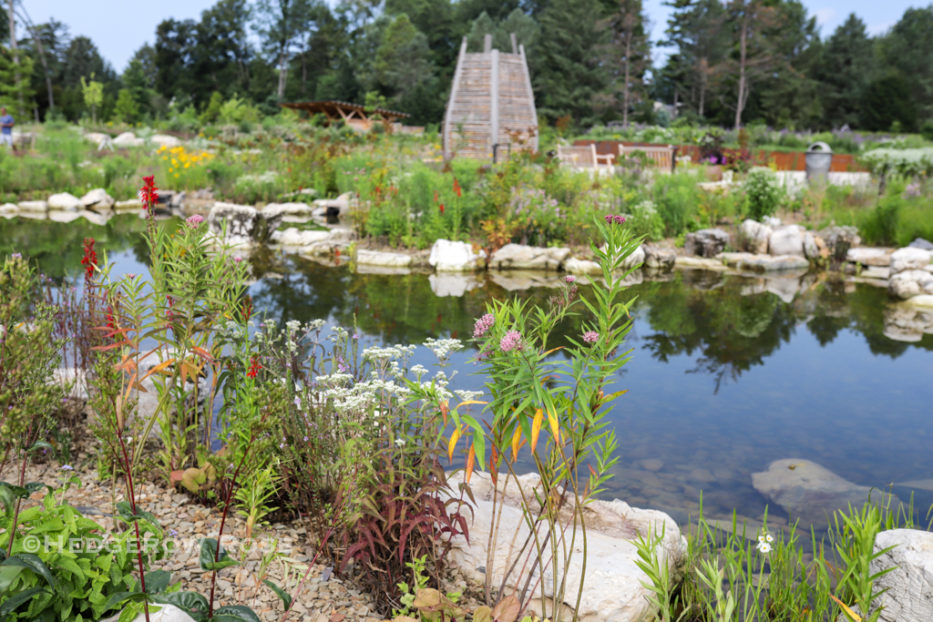
I’ve been visiting The Arboretum at Penn State since it’s inception more than a decade ago and have photographed and written about it plenty of times with a lot of excitement but I mean it when I say they’ve truly outdone themselves with this recent expansion: The Pollinator and Bird Garden which opened in July, 2021.
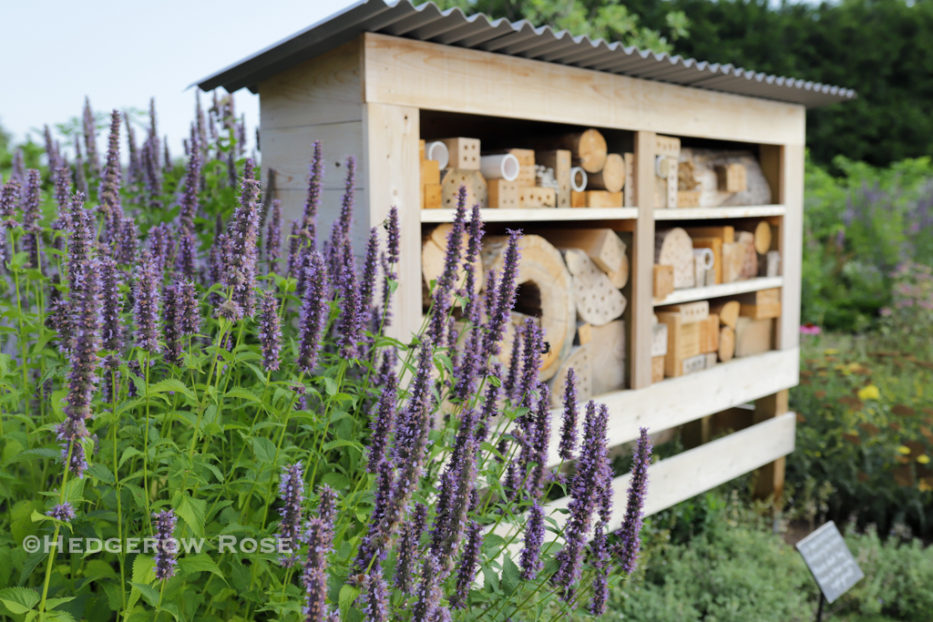
To be honest, I was initially anxious about this new garden mainly due to the fact that the expansion and re-design had them completely demolishing what was my favorite part of the Arboretum: the former Pollinator Garden. For about a year we watched from behind construction fences as heavy equipment cut into the earth, shapeless piles of debris and soil formed, concrete began being poured, and, weirdly, dead trees were planted? But it all came together and when it did, it was jaw dropping. Now, I realize probably most of you will never come to State College, Pennsylvania to see this garden but there’s so much we can glean from it and incorporate into our own gardens, so let’s dive in!

So, obviously the point of this garden is to attract various species of pollinators and different kinds of birds while also educating the public. I’m so happy about this on so many levels; I mean, this is what I’ve been banging on about for years! Here’s what the Arboretum has to say as stated on their website:

“The Arboretum’s Pollinator and Bird Garden, which opened in July 2021, is unique in its ambitious design and intent: to educate the public about the many insect pollinator species and broad range of resident and migratory birds in our region, and conduct research that helps us protect the ecosystems that support these species. To this end, the Arboretum worked with a large team of Penn State-based and outside experts, including Penn State’s Center for Pollinator Research, to develop a design that encourages biodiversity by incorporating habitats such as a pond, wetlands, woodland, and dry meadow. The new gardens, which encompass more than three acres, showcase quite a large array of plants—over 390 unique species and varieties—most of which are native to Pennsylvania or the greater Appalachian region.”
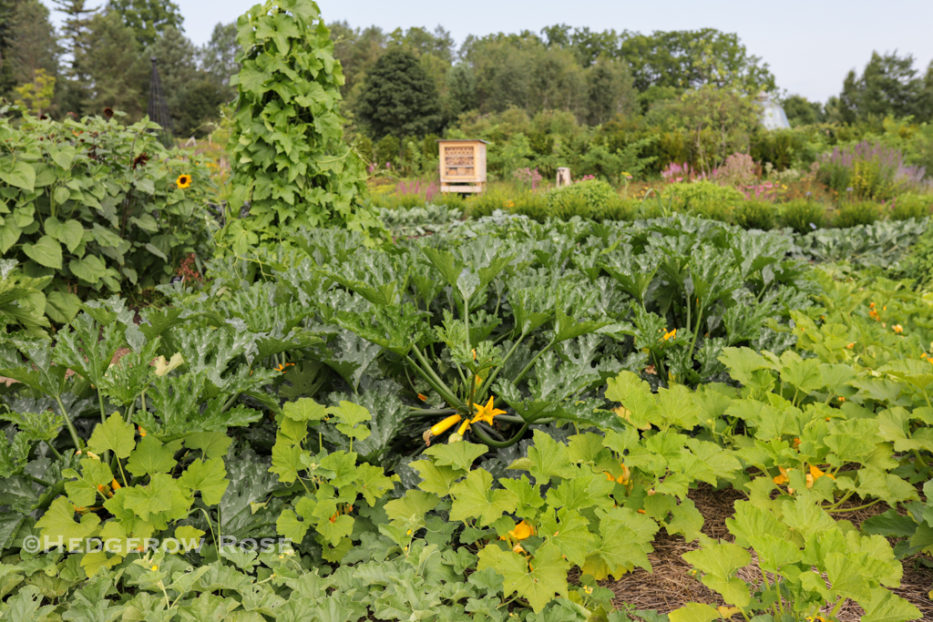
Pretty awesome, right? You’ll note from the photos that the garden is quite large and varied incorporating two very different kinds of ponds, honey bee hives with viewing ports, various bug hotels, a meadow “disc”, veggie gardens, an orchard, a bird feeding station, various bird baths, “snags” (those dead trees I was wondering about), swaths of mixed tree plantings and so much more.


Here’s my niece peeking into one of the ponds which can be observed via a wooden bridge. So much attention to detail has been put into these water features, for example, after this pond was constructed and filled we noticed that great big piles of deciduous tree leaves were brought in and laid in the water. My guess is they did that because the leaves would give cover to aquatic life and the organic material would jump start the whole system. You’ll note the marginal plants and the rocks laid at various levels. All provide safe access to the pond for wildlife as well as cover, food and nesting areas.
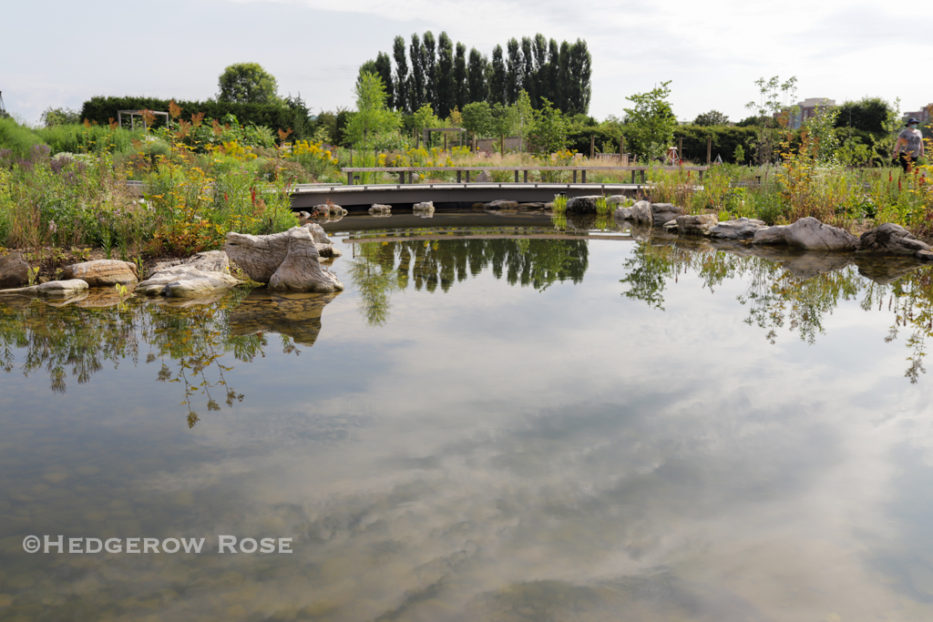
Looking at the same pond from another angle. There is also a tiny waterfall that winds through the rocks on the left side of your screen but is difficult to see in the photos.
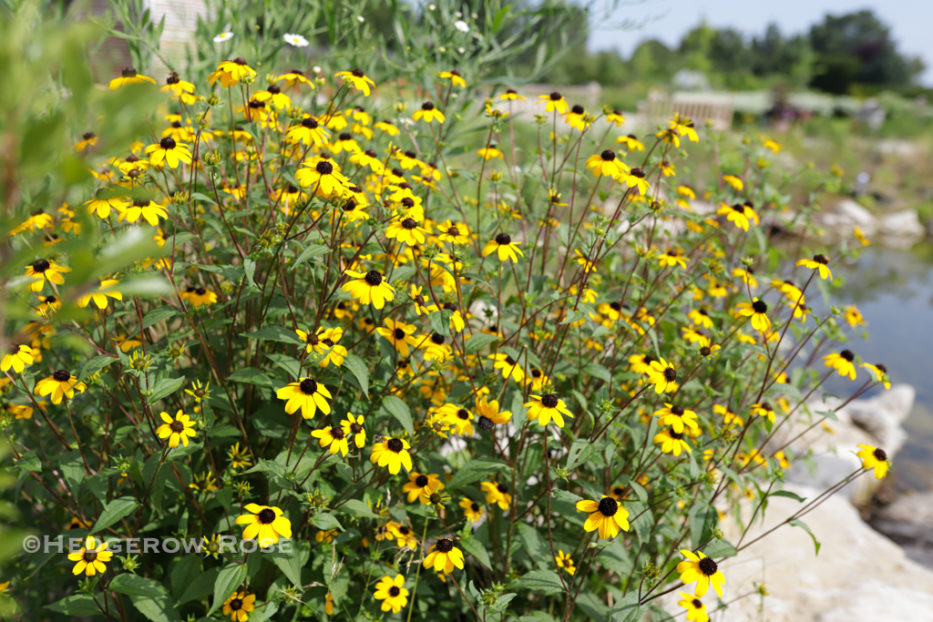

Another pond in the garden is particularly devoted to wildlife with a boggy area as well as a deeper region that can be traversed and accessed by a dead tree specifically brought in for that purpose. These photos were taken last July when the plants had barely been in for a month. Since then they’ve filled out quite a bit. Around this pond is a mixed planting of hardwoods, conifers, understory trees and shrubs. They were planted on a purpose-built berm so the neighborhood on just the other side will eventually be completely screened from view.
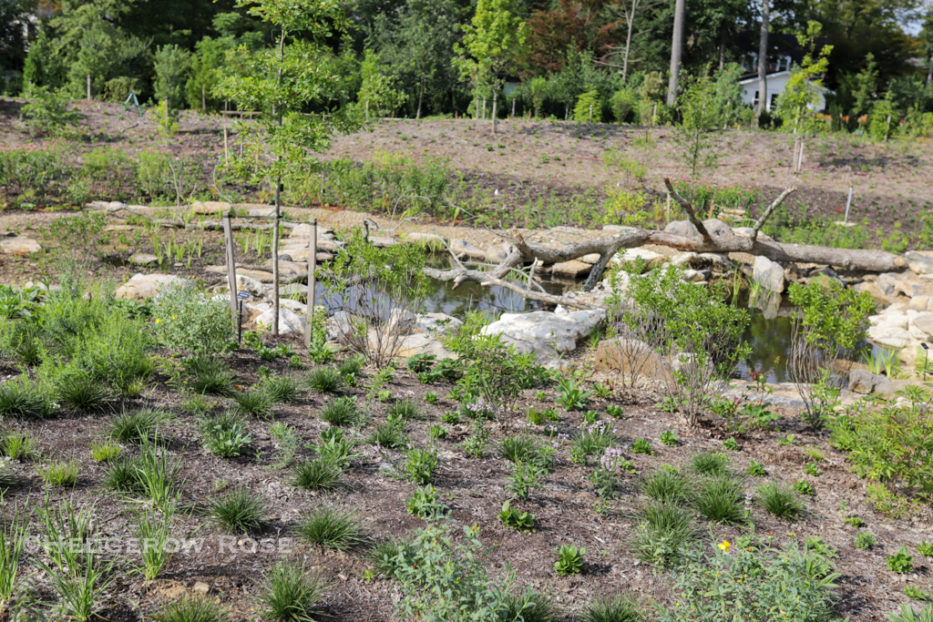
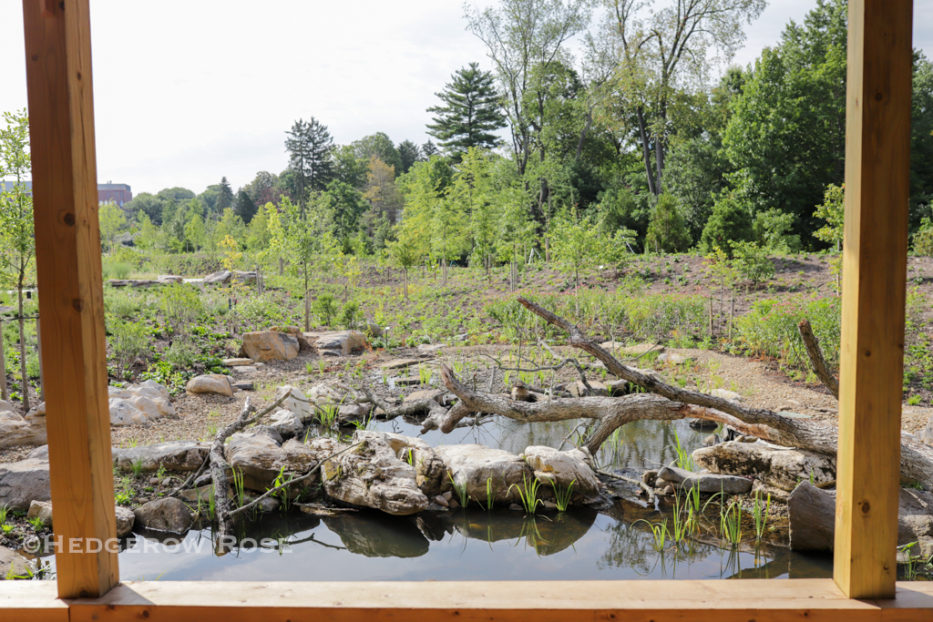
A cedar pavilion allows visitors to sit and watch the various wildlife that come to the pond to hunt for food and have a wash. I’ve spent a lot of time looking at this exact view since this garden opened.
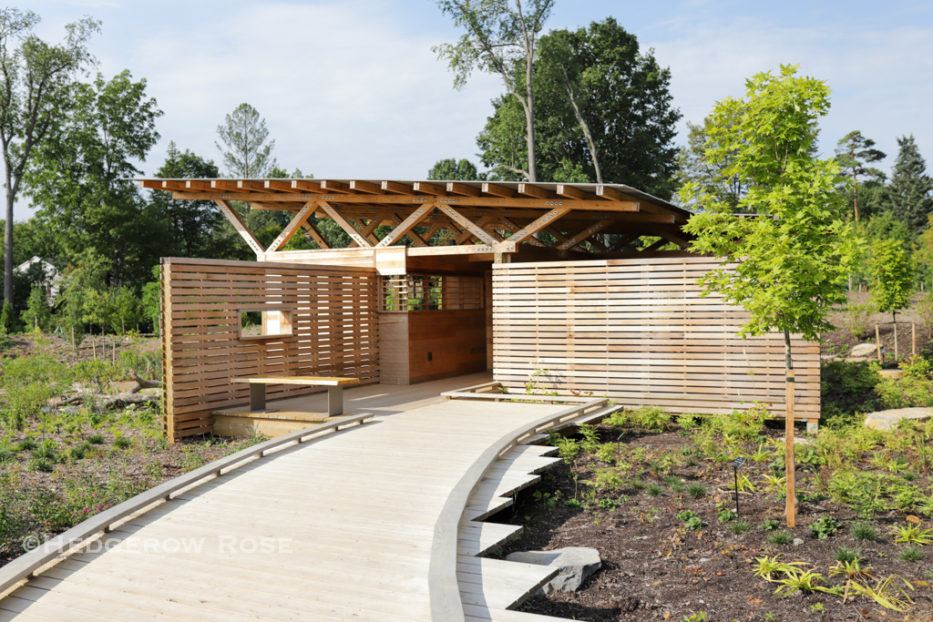
Entrance to the pavilion. There are 2 “rooms.” One looks out onto the pond and the other has a view of the bird feeders and an amazing hand hewn rock birdbath/fountain.

Meadow “disc” can be seen on left side of the photo. It’s an interesting design that enables visitors to stand inside and be surrounded by flowers at eye level.
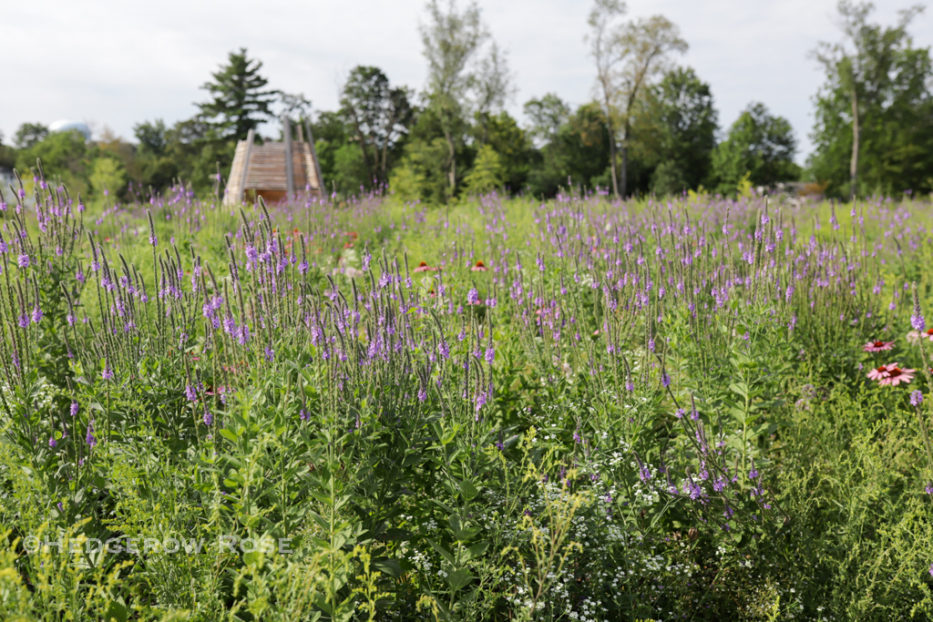
That peculiar wooden structure seen above houses a honey bee hive with viewing ports. Guests can watch the bees store nectar and pollen and draw comb (sadly, the comb is not natural but drawn on a frame but beggars can’t be choosers.)
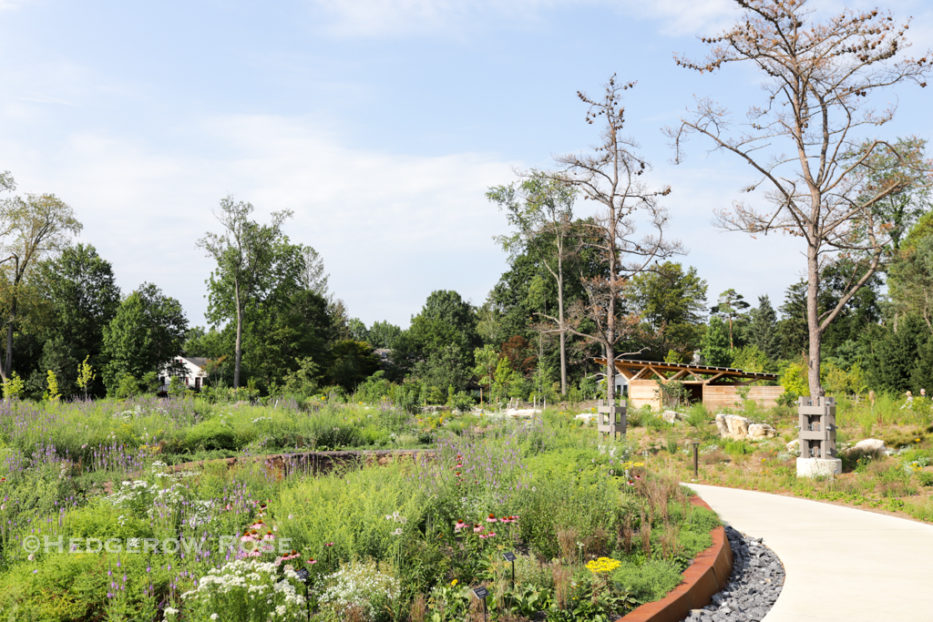
Remember the dead trees I mentioned being “planted?” There they are on the right side of the photo: two dead conifers that are bolted into what can only be described as the mother of all Christmas tree stands. They’re there to educate the public about the importance of snags to the ecosystem. Since this photo was taken, a woodpecker nest box was added to one of the trees.
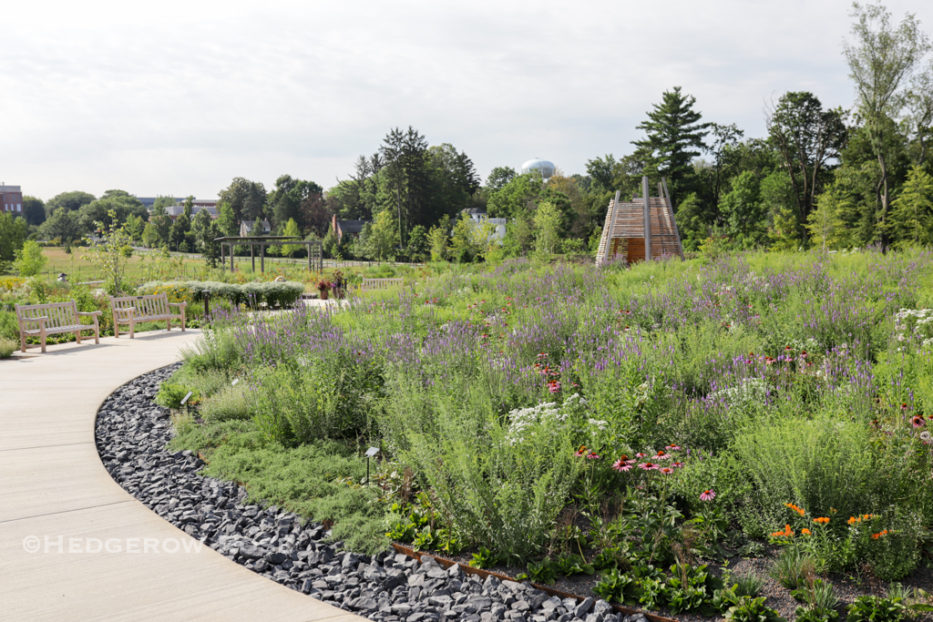

The goal for any garden should be to provide nectar and pollen rich plants for as many months of the year as you can. In our personal gardens, we start with early bulbs like crocus and winter aconite and go right through to late autumn with flowers like Japanese anemones. It will be interesting to watch this garden progress through the months and take notes on what is in flower.

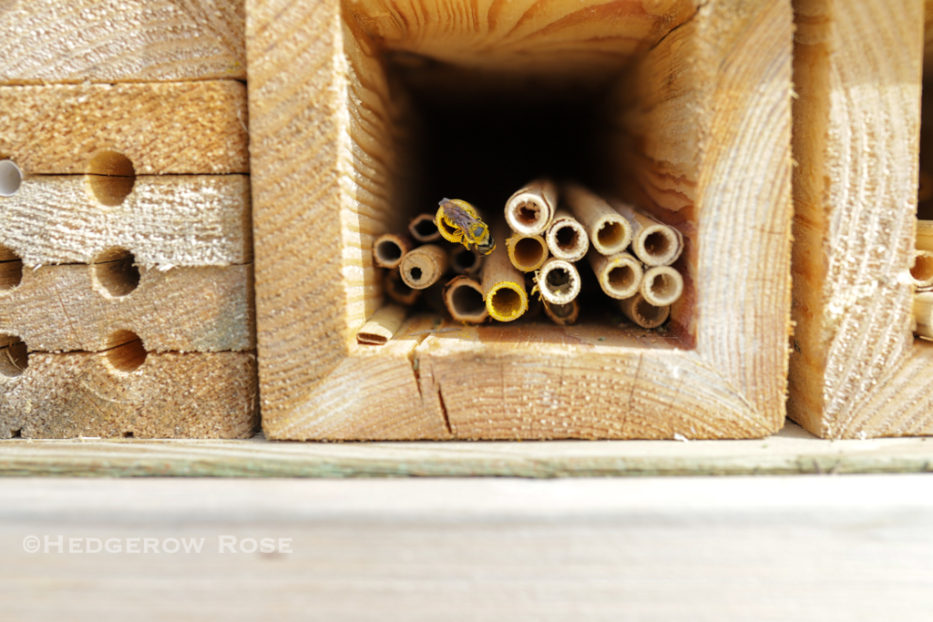
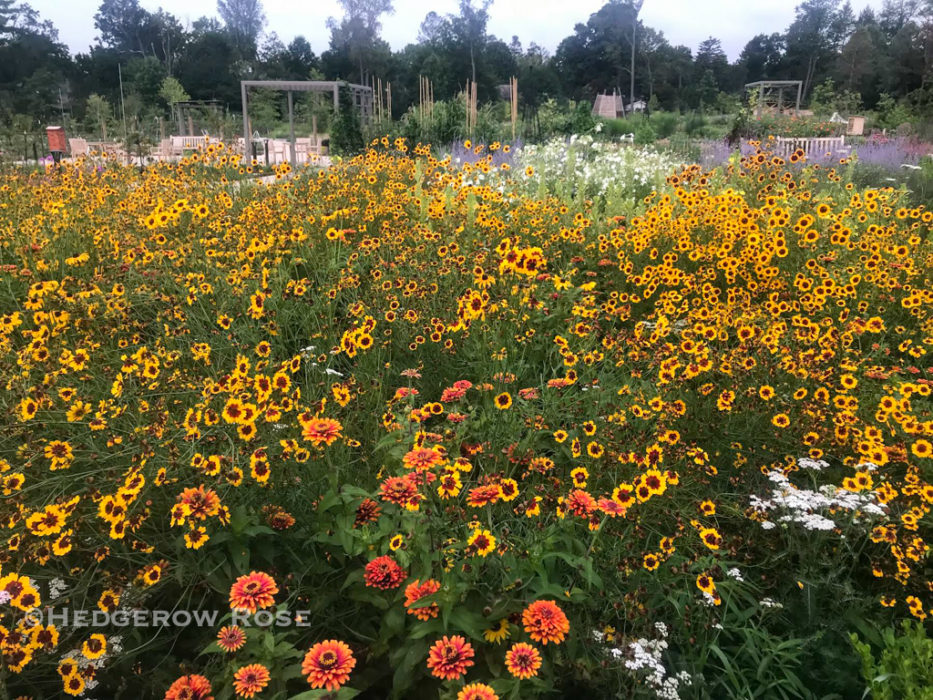
I hope you have enjoyed the tour! Follow along on my personal Insta account to see more of this beautiful garden as we head into spring.
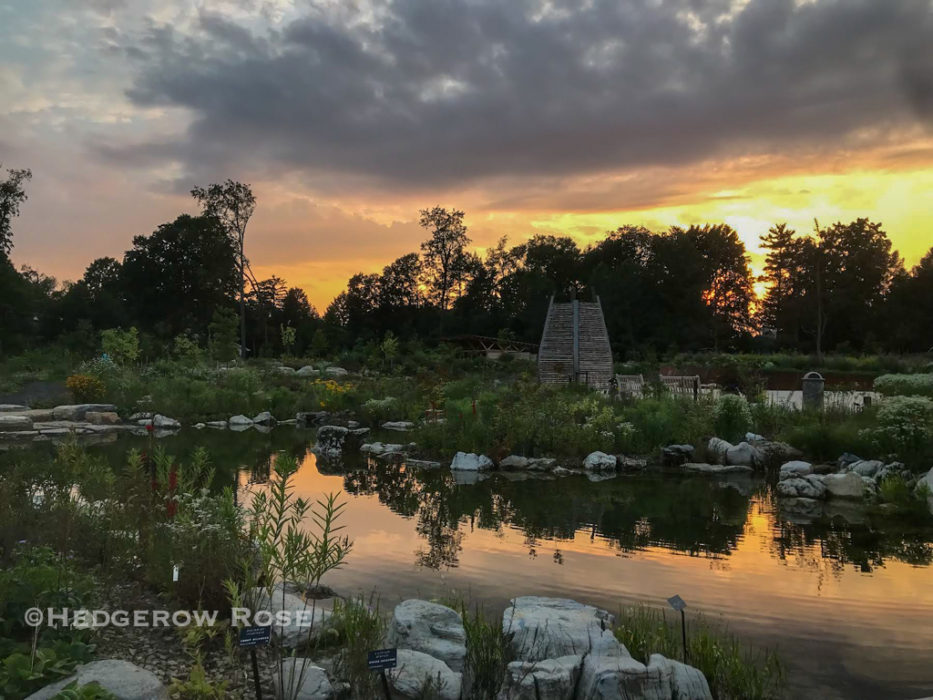
..

